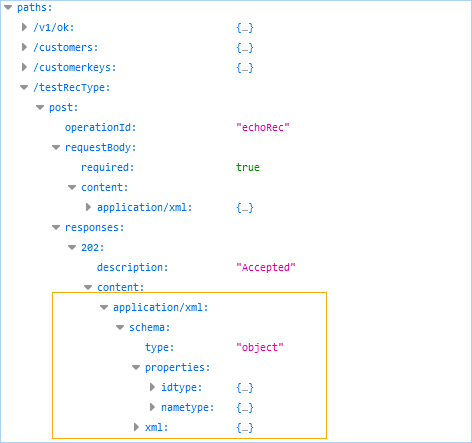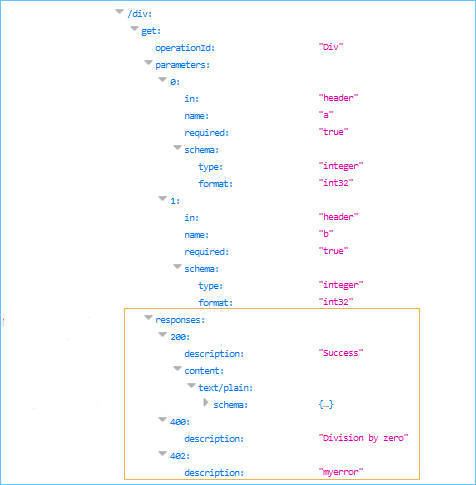Generate service description on demand
Access a description of a REST Web service through a query string on the URL of the Web service.
You can output the OpenAPI description for the Web service in a browser tab in either JSON or YAML format. For a web service server started with Genero Application Server (GAS) the OpenAPI description URL would be:
http://myhost:6394/gas/ws/r/myGroup/myXcf/myService?openapi.jsonOr
The GWS service must be running in order to provide the output.
The OpenAPI description provides information about the operations defined in a Web service. When developing client applications that access Web services, you may need to refer to the OpenAPI description for the Web service for details of the resource endpoints, operations, supported media types, etc. To learn more about the OpenAPI specification, refer to the OpenAPI documentation.
The sections highlighted in this topic are valuable in respect to Genero RESTful Web services. The samples are in JSON format.
Service information

Paths
The paths section lists the available resources and functions (for example,
/add, /sub/{f}, /mult/{coef}/hello, etc.)
and operations (GET, POST, etc.).
Parameters

Body requests and responses
WSMedia on the server side. The GWS
engine exposes the object content (properties) in the schema sub parts.
Responses
